#Mirador Publishing
Text
"Till Death Do You Part" by Marisa Billions
Twisty, Propulsive, and Intoxicating
#books #bookreview #reading #readerviews
Till Death Do You Part
Marisa BillionsMirador Publishing (2024)ISBN: 978-1915953780Reviewed by Stephanie Elizabeth Long for Reader Views (04/2024)
They have an idyllic marriage—the envy of all their friends. But lately, Sage Foster-Reed’s happiness has been wavering. Maybe the lack of intimacy or Jules’ blatant rejection made her feel frustrated and unloved. Perhaps it was simply a rough patch…

View On WordPress
0 notes
Text
"Beneath 1,350 square miles of dense jungle in northern Guatemala, scientists have discovered 417 cities that date back to circa 1000 B.C. and that are connected by nearly 110 miles of “superhighways” — a network of what researchers called “the first freeway system in the world.”
Scientist say this extensive road-and-city network, along with sophisticated ceremonial complexes, hydraulic systems and agricultural infrastructure, suggests that the ancient Maya civilization, which stretched through what is now Central America, was far more advanced than previously thought.
Mapping the area since 2015 using lidar technology — an advanced type of radar that reveals things hidden by dense vegetation and the tree canopy — researchers have found what they say is evidence of a well-organized economic, political and social system operating some two millennia ago.
The discovery is sparking a rethinking of the accepted idea that the people of the mid- to late-Preclassic Maya civilization (1000 B.C. to A.D. 250) would have been only hunter-gatherers, “roving bands of nomads, planting corn,” says Richard Hansen, the lead author of a study about the finding that was published in January and an affiliate research professor of archaeology at the University of Idaho.
“We now know that the Preclassic period was one of extraordinary complexity and architectural sophistication, with some of the largest buildings in world history being constructed during this time,” says Hansen, president of the Foundation for Anthropological Research and Environmental Studies, a nonprofit scientific research institution that focuses on ancient Maya history.
These findings in the El Mirador jungle region are a “game changer” in thinking about the history of the Americas, Hansen said. The lidar findings have unveiled “a whole volume of human history that we’ve never known” because of the scarcity of artifacts from that period, which were probably buried by later construction by the Maya and then covered by jungle.
Lidar, which stands for light detection and ranging, works via an aerial transmitter that bounces millions of infrared laser pulses off the ground, essentially sketching 3D images of structures hidden by the jungle. It has become a vital tool for archaeologists who previously relied on hand-drawings of where they estimated areas of note might be and, by the late 1980s, the first 3D maps.
When scientists digitally removed ceiba and sapodilla trees that cloak the area, the lidar images revealed ancient dams, reservoirs, pyramids and ball courts. El Mirador has long been considered the “cradle of the Maya civilization,” but the proof of a complex society already being in place circa 1000 B.C. suggests “a whole volume of human history that we’ve never known before,” the study says."
-via The Washington Post, via MSN, because Washington Post links don't work on tumblr for some godawful reason. May 20, 2023.
#maya#mayan#mesoamerica#central america#el mirador#guatemala#indigenous#indigenous history#indigenous peoples#mesoamerican#architecture#ancient history#anti colonialism#fuck racist misconceptions and narratives about indigenous societies and technologies#history#good news#hope
251 notes
·
View notes
Text
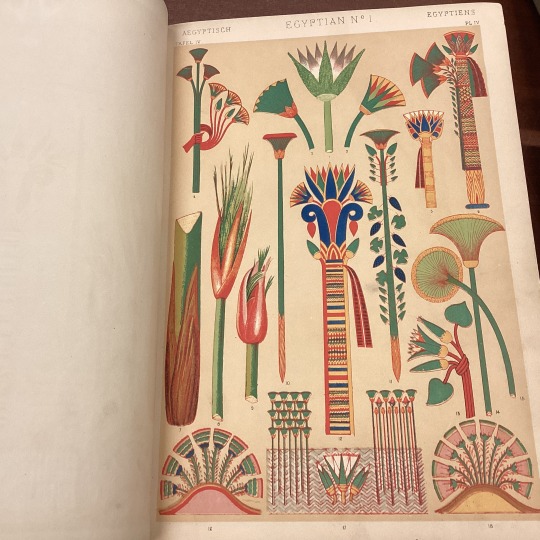
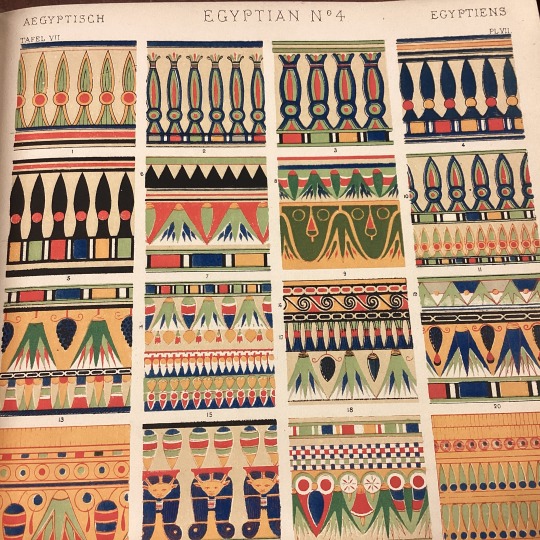

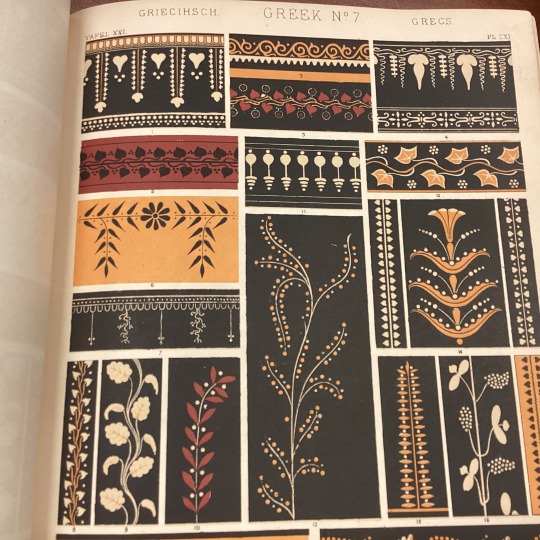

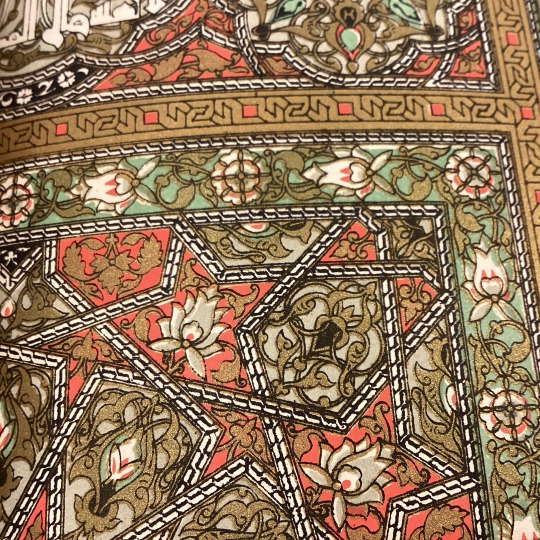
It’s the season for decorating! If you are looking for something different or need inspiration, why not study The Grammar of Ornament from 1865? Harvard’s Mirador viewer lets you view the entire book! https://iiif.lib.harvard.edu/manifests/view/drs:425343599$1i (Link also available in our bio.)
The Fine Arts Library owns an original folio edition of Owen Jones’s (1809–1874)work, The Grammar of Ornament, one of the most influential color plate books on decorative design and ornament of the nineteenth century.
In the opening chapter, Jones wrote that one of the universal qualities among humankind is the desire to make beautiful things. Jones, an architect by training, assembled more than one hundred plates illustrating patterns and ornament from around the world and over different periods of time. Many of his illustrations were based on what he saw in museums and private collections in England at that time and in the Universal Exhibitions held in London in 1851 and 1855, as well as from his personal travels in Europe and parts of the Middle East.
The Grammar of Ornament employed the latest and most sophisticated printmaking innovations. The readers at that time must have noticed the wide range of colors in Jones’ lithographs. In color lithography, each color is printed from a separate lithographic stone, and the time, commercial lithographic printing usually included a set of only three or four colors. Knowing that color played a crucial role in ornament, Jones employed assistants and set out to create lithograph prints that required as many as twenty lithographic stones. The result was this beautiful publication.
Image 1: Egyptian No.1
Image 2: Egyptian No. 4
Image 3: Nineveh 7 Persia No. 1
Image 4: Greek No. 7
Image 5: Arabian No. 4
Image 6: Detail from Arabian No. 4
The grammar of ornament
By Owen Jones ; illustrated by examples from various styles of ornament ; one hundred and twelve plates.
Jones, Owen, 1809-1874 [author]
London : Published by Day and Son, Limited, [1865]
157 pages, 100, that is, 111 leaves of plates : illustrations (some colored) ; 35 cm
English
HOLLIS number: 990050472950203941
Color illustration of Nineveh & Persian design showing several different patterns
Color illustration of Greek design showing several bold patterns inspired by plants and flower, mostly against dark background.
Color illustration of Arabian design showing several intricate Islamic mosaic patterns.
Detail from the previous image.
#Grammarofornament#OwenJones#Lithography#Ornament#DecorativeDesign#DecorativeArt#SpecialCollections#HarvardFineArtsLibrary#Fineartslibrary#Harvard#HarvardLibrary#harvardfineartslibrary#fineartslibrary#harvard#harvard library#harvardfineartslib#harvardlibrary#special collections
132 notes
·
View notes
Text
This is the worst story I know about hocuses. And it’s true.
Four Great Septads ago, back in the reign of Claudius Cordelius, there was a hocus named Porphyria Levant. The hocuses back then had this thing they could do, called the binding-by-forms, the obligation d’âme. It happened between a hocus and an annemer, an ordinary person, and it was like an oath of loyalty, only a septad times more. The hocus promised to protect the annemer from everything, including kings and other hocuses and basically anybody else who had an interest. The annemer promised to be the hocus’s servant and do what they said and no backchat, neither. And they renounced their family and all their other connections, so it was like the only thing in the world that mattered to them was the hocus. And then there was a spell to stick it in place and make sure, you know, that nobody tried to back out after it was too late.
You can see the problem, right? Most half-bright folks can. But some hocuses were so powerful and so nasty that I guess it seemed like it was better to go ahead and do the obligation d’âme with a hocus you sort of trusted than to go wandering around waiting for a different hocus to get the drop on you.
So there was Porphyria Levant. And there was Silas Altamont. Silas Altamont was annemer, a guy who’d been the favorite of Lord Creon Malvinius, and then when Lord Creon got married, Silas Altamont was out on his ear, and scared shitless of Lord Creon’s wife, who was way better connected than him, and was rumored to have three or four hocuses on her string to boot. And she was poison-green with jealousy, because she loved Lord Creon like a mad thing, and everybody knew he didn’t give a rat’s ass about her. So Silas Altamont goes to Porphyria Levant—who was powerful enough to protect him from Lisette Malvinia, no matter who she had running her errands—and begs Porphyria Levant to do the obligation d’âme. And Porphyria Levant smiles and says okay.
Now, the thing about the binding-by-forms, the way my friend Zephyr explained it to me, is that it lets the hocus make you do what they want.
Except for kill yourself. They can’t make you do that. But what Porphyria Levant tells Silas Altamont to do is fuck her. I’ve heard it different ways. Some people say Silas Altamont was beautiful as daylight, and Porphyria Levant had been hot for him for indictions. Some say Porphyria Levant didn’t know he was molly, thought he was janus and wouldn’t mind. And some say—and I got to admit, this is what I think—that she knew he was molly and that was why she did it. There are other stories about Porphyria Levant, and it’s the kind of thing she would do.
Anyway, there’s Silas Altamont. He’s molly, and he’s still in love with Creon Malvinius, but he has to do what the obligation d’âme says, and it says, You got to fuck Porphyria Levant and make her happy. And after a while he goes to her and says, “ can’t stand this no more, please, let me stop or I’m going to go out and slit my wrists.”
And Porphyria Levant says, “Silas,” and smiles her little smile, “I forbid you to kill yourself.”
That’s what hocuses are like, and that’s why, if you live in the Lower City of Mélusine, you keep one eye on the Mirador all the time, same way you would with a swamp adder. It’s just common sense.
I forget when I first heard rumblings about a book series called the Doctrine of Labyrinth by an up-and-coming writer named Sarah Monette. It was undoubtedly before 2014, because when she published Goblin Emperor as Katherine Addison, I bought it without even reading the synopsis I was that ecstatic to finally get a taste of her writing. You see, Monette had a string of publishing woes, notoriously leading to at least one of the books being out of print before the series was even finished despite having amazing critical press and quite good initial sales. And one of the books just _vanishing from shelves was pretty much the series' death knell; new readers wouldn't start something they knew they couldn't get their hands on half of; and if readers weren't buying, neither were libraries.
It was this unicorn series: dark (dealing extensively with the aftermath of abuse and mind-control), inventive as hell, all about found family and the juxtaposition of brothers: one a high-class sorcerer with a stick up his ass and the other a slum-dwelling lord of cat burgling. With, from what tiny, glorious tidbits I could weasel from the internet the cat burglar acquiring a physical disability later in the series that was not! magically cured; queerness _everywhere; redemption and betrayal and invented languages. And magic absolutely _dripping off every page.
Anyone who's followed me for more than five minutes understands why this was a great white whale, over which I would eternally envy those fortunate few who had glimpsed its splendor.
But then! late last year, joy and jubilation poured forth from nowhere when Open Road Media re-published the whole kit and caboodle. ^^ (Monette/Addison had been low-key promising for a while there was good news in the pipe-line, but she's been very busy with her Tor ventures, including the magnificent Angel of the Crows, and I of little faith thought this news a very pretty mirage).
And then I got scared shitless. What if I'd poured inordinate amounts of the last decade into finding a copy of the whale someone could scan into text for me (cause the Open Road debut is its first in an accessible E-form), failing again and again only for it to be decidedly meh? ^^ But it's spring break and if I don't read at least the first one now, it aint happening 'till May. So, I girded my loins and y'all: just swoon with me over the brilliance of Melusine's prologue.
Mildmay, our lord o' the cat burgle: clearly educated, for all he's in the worst part of the city, but not bothering to sand off the patina of the slums either. An absolute mélange! of expressions, from the Georgian English "Molly" for gay men to the Latin "indiction" for calendric cycles (I'm assuming in this world they're as close as you can get to its original meaning of the five-year Roman Republic lustrum because there are also septets--clearly based off the Latin seven which seem to be the largest counting group so far within the city. Which wouldn't be the case if the indiction were the later fourteen- or fifteen-year length--unless of course indictions are meant to be multiples of seven and septads are a way of breaking that down into more manageable units damn now I can't wait to find out which theory is correct even the fucking prologue is crammed with world-building mysteries). Not to mention the slyest introduction of "Jaus" my beloved god of gates and duality as the perfect bisexual slang my GOD. And I know the linguistic pallet only gets richer, having caught a glimpse of Demi-Monde to explain the circumstances of an unfortunate courtesan Mildmay will be assisting.
Somehow, Monette weaves this mishmash of languages into something entirely comprehensible, giving the city a rich flavor you don't find in ninety-nine percent of fantasy, stuck on its castles and knights and feudalism. Fuck, this is gonna be so good.
@dr-dendritic-trees this might be up your alley (not sure how dark you tolerate your fiction and this goes some pretty dark places from reviews, but know you were a huge Crow fan)
^ Open Road has a penchant for collecting out-of-print titles that become my heart's beloveds ala Elizabeth Wein's Aksumite cycle (opening in Winter Prince with an Arthurian-esque re-telling, but steeped in ancient Ethiopian culture and proceeding into…how the hell does one even describe Telemakos? Mixed-race child prodigy of thievery and diplomacy, simultaneously clever and mischievous as any trickster should be who will make you cry six times in every book is about the best I can do. These are absolutely as good as! Megan Whalen Turner's Queen's Thief and even more underappreciated.
^^ Having grown up shamelessly queer in a landscape that only in the last decade has made significant strides towards making queer books accessible to the blind, I have so many white whales. Heather Gladney's Song of Naga Teot y'all. Sometimes, I just quietly keen over how much I wanna read this trope-filled book I don't even care if it's good people could probably make me accomplice to terrible deeds if they just promised to read aloud all the pulpy queer books, I still can't get my hands on after all was said and done.
2 notes
·
View notes
Text
Caged Time by Erik S. Meyers #giveaway
BOOK BLAST
Book Title: Caged Time
Author: Erik S. Meyers
Publisher: Mirador Publishing
Release Date: February 2, 2021
Genres: LGBTQ Jewish historical fiction
Tropes: Struggling to be yourself in a place/time that doesn’t really want you
Themes: Coming out, being yourself
Heat Rating: 4 flames
Length: 144 pages
It is a standalone book and does not end on a…

View On WordPress
2 notes
·
View notes
Audio
This is a beautiful traditional song from Catalonia called Lo poder del cant (“The Power of Song”).
Since it’s a very old traditional song, different people from different areas know it slightly different. I was going to post this version sang by Maria Laffitte (I think it works better on Tumblr to post a SoundCloud link?), but I’ve found this version by Ramon Manent and I have to publish it because it’s so beautiful. Both melodies are so sweet... Which one do you like more?
youtube
Here’s the lyrics in Catalan and the translation to English. Some lyrics are slightly different in both versions, I’ll write both separated with a dash.
Don Francisco se n'estava
tancadet a la presó.
Quan sa mare l'anava a veure / Quan sa mare en rep la nova
n'hi venia una gran tristor. / ja li ve una gran tristor.
Mr. Francisco was
locked in prison.
When his mother went to visit him / When his mother got the news
she was overcome by a great sorrow.
Ja n'hi compra una guitarra,
que en tenia molt bon so, / que té un so consolador
a la presó l'hi portava
per calmar-li la tristor. / que la trempi al seu tenor.
She bought him a guitar
that sounded very well, / that has consoling sound
brought it to him in prison
to calm his sorrow. / so he can tune it to his key.
- Quan la tingueu trempadeta / Quan l’haureu a to posada
cantareu una cançó.
- Quina voleu que jo us canti, / Quina cantaria, mare?
quina en cantaria, jo?
“When you have tuned it
you’ll sing a song.”
“What song do you want me to sing to you, / What sound would I sing, mother?
which one would I sing?”
- La que cantava ton pare
el dia de l'Ascensió. - / a la Nit de l’Ascensió
Don Francisco la cantava
amb un to commovedor.
“The one that your father used to sing
on the Feast of Ascension.” / on the Night of Ascension”,
Mr. Francisco sang it
in a moving key.
Els ocells així que el senten
es paren per sentir el so.
Les heures que van per terra
s’adormien de tristor.
The birds, as soon as they hear him,
stop to hear the sound,
The ivies that grow on the ground
fell asleep out of sadness.
Els infants en ses bressoles
s'adormen amb el seu so;
els ocells que van per l'aire / tots els patges de la Reina
no saben de volar, no. / no saben caminar, no.
The children in their cradles
fell asleep for the sweetness;
the birds that go on the air / all of the Queen’s page boys
no longer know how to fly, no. / no longer know how to walk, no.
El rei també l'escoltava / La reina s’ho escoltava
de dalt del seu mirador. / des del més alt mirador.
ja pregunta als seus patges:
- Qui és aquest cantador?
The king also listened to him / The queen was listening to it
from up his enclosed balcony. / from the highest enclosed balcony.
He/She asks his/her page boys:
“Who is this singer?”
From here on, the two version become more different from each other. I’ll translate first one and then the other. Maria Laffitte:
Ja n'hi feien de resposta:
- N'és un pres de la presó
El rei de tant que li agrada,
llença llàgrimes de plor.
And they give him an answer:
“He’s a prisoner in jail.”
The king likes it so much
that he cries.
Promptament mana als seus patges
que el treguin de la presó.
que si ell tenia la culpa
no cantaria pas, no.
Quickly he orders his page boys
to free him from jail.
For if he were guilty
he wouldn’t sing, no.
And the version sang by Ramon Manent:
Aquest és en Don Francisco
que està tancat en presó.
Ja respon així la reina:
per fill el voldria jo.
This is Mr. Francisco
who is locked in prison.
And so the queen answers:
“I would like to have him as my son.”
Ja responia la infanta
per marit, mare, el vull jo.
La reina mana als seus patges
que el treguin de la presó.
And the princess answers
“mother, I want him as my husband.”
The queen orders the page boys
to free him from prison.
La resposta que els hi feia
que no se’n vol anar, no.
Que no hi ha més galant vida
que estar tancat a presó.
The answer that he gave them
was that he didn’t want to leave, no.
For there is not a more charming life
than being locked in prison.
In this version, the prisoner doesn’t want to accept to marry just to be freed, and prefers to not lie about love and stay locked.
This song has been covered by many bands in Catalonia, with different versions.
#música#arts#traditional music#traditional song#folk music#maria laffitte#ramon manent#music#world music#music rec#song rec#català#catalan#languages#romance languages#cultures#culture
18 notes
·
View notes
Text

January 10, 2023
Huge New Ancient Maya Civilizational Complex Found in Northern Guatemala
A previously unidentified Maya area now 964 settlements have been found by LIDAR flying over Guatemala’s Mirador-Calakmul Karst Basin in northern Guatemala. It is dated to 1000 BCE-150 CE covering 650 square miles with 110 miles of roads. They also built a vast causeway network. There are 775 sites in the central area and 189 sites in the surrounding area. 417 cities, towns, and villages from part of a unified civilization. Patterns, ceramics, sculptures, architecture all show this unity. Thousands of workers had to be mobilized in an area previously thought to be sparsely populated.
“The labor would include lime producers, mortar and quarry specialists, lithic technicians, architects, logistics and agricultural procurement specialists, and legal enforcement and religious officials, all operating under a political and ideological homogeneity,”
Large pyramids and platforms have been identified as well as 30 ball courts. 195 artificial reservoirs and a network of canals for transporting water was were constructed.
The study is published in the journal Ancient Mesoamerica.
The report is published here;
https://www.iflscience.com/enormous-maya-civilization-discovered-complete-with-roads-reservoirs-and-ballcourts-66804
3 notes
·
View notes
Text
"Thirteen-year-old Denise and five year-old Elisabeth owe their lives to one of the French gendarmes who came to arrest their father: he told them to run home, grab what they could, and disappear. What they took, a small suitcase containing manuscripts in tiny handwriting, some clothing, photographs, diaries—“I did not know what it was, but I knew it was precious to mother,” says Denise—turned out to be the text of the first two volumes of Suite Française. The girls survived by being hidden by a teacher, friends, and a governess who guided them through convents, safe houses, and the like until after the war, when they realized that both parents had perished. In 1992 the younger daughter, Élisabeth Gille, published a biography of her mother entitled Le Mirador, for which she used some of the letters found in the suitcase. The tiny writing had to be deciphered with a magnifying glass, the project complicated for the two sisters by the enormous sense of loss these writings evoked. Even after the publication of this imaginary memoir (Élisabeth died in 1996), Denise put the texts in a drawer, finding it too painful to read her mother’s last words. However, in April 2004 Denise met Myriam Anissimov, who had written biographies of Primo Levi and Roman Gary, the latter a family friend of Irène’s. It was Anissimov who realized that far from being a personal journal, these writings were two complete novels, and she arranged for their publication in 2004."
0 notes
Text
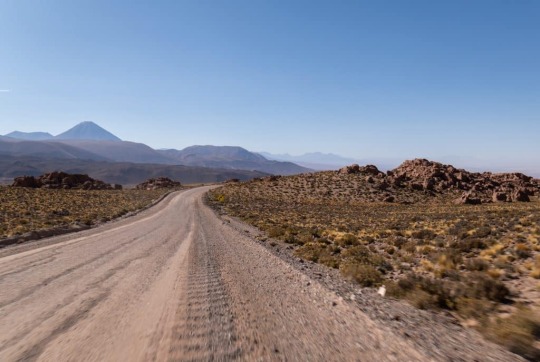
San Pedro de Atacama: Your Gateway to an Unforgettable Atacama Desert Adventure
Ever dreamed of exploring a desert unlike any other? San Pedro de Atacama, a small oasis town nestled in Chile's Atacama Desert, might just make your dreams come true. This fascinating place is surrounded by one of the driest spots on Earth, yet bursts with life and adventure.
Why choose San Pedro as your base?
Adventure Playground: Hike through otherworldly landscapes like Valle de la Luna, witness geysers erupt at El Tatio, and sandboard down giant dunes.
Wildlife Wonderland: Keep your eyes peeled for flamingos, vicuñas, and guanacos, all unique to the Atacama ecosystem.
Charming Escape: Relax in San Pedro's lively town square, filled with shops, cafes, and friendly locals.
This post was published in February 2024 and was co-written by Adventurous Kate and Hannah Cooper.
The Atacama Desert is NOT a place where you’d want to get stuck.
Safety in San Pedro de Atacama
When exploring the stunning landscapes of the Atacama Desert, it's crucial to prioritize safety. Here's what you need to know:
High-Altitude Challenges: Be prepared for the effects of the high-altitude desert environment, such as dryness and potential altitude-related symptoms like fatigue and headaches, especially at places like the El Tatio geysers.
Transportation Options: Consider whether to rent a car or join guided tours. While renting a car may offer flexibility, the rugged driving conditions make guided tours a safer choice.
Limited Resources: With only one gas station in San Pedro de Atacama and no phone signal outside the town, a breakdown can quickly become dangerous. Roads are often unpaved and in poor condition.
Extreme Conditions: Prepare for extreme temperatures, from scorching heat during the day to chilly nights. Safety trucks patrol main roads to assist stranded tourists.
Tire Maintenance: Keep a close eye on tire pressure, as deflating tires can be a risk. Ensure a full tank of gas, carry ample water and food, and avoid driving solo if possible.
Drive Safely: Drive cautiously, especially on unpaved roads, and watch out for wildlife. Never drive while fatigued, and consider joining tours or traveling with companions for added safety.
Valle de la Luna, or Valley of the Moon — perfect to visit in the late afternoon.
Best Things to Do in San Pedro de Atacama
Visit the Valle de la Luna
Explore Valle de la Luna (Moon Valley), a must-see spot in Atacama! Ideal for your first day in San Pedro de Atacama, it's perfect for an afternoon adventure. Discover the enigmatic Three Marias rocks, an abandoned salt mine, and trek through colossal dunes on a 40-minute walk.
Just a 25-minute drive from San Pedro (super close by Atacama standards), many tourists opt to cycle there before 11:00 AM. But for a more serene experience, arrive in the afternoon when the light is softer. Don't miss the stunning sunset at La Piedra del Coyote viewpoint! Remember to purchase admission tickets via Punto Ticket, ensuring your visit at a specific time.
Alternatively, book a Valle de la Luna tour from San Pedro. This guided experience includes all the highlights and ends with a picturesque sunset nearby. Don't miss this unforgettable Atacama adventure!
La Piedra del Coyote, just before sunset.
Watch the sunset at La Piedra del Coyote
Discover the Beauty of La Piedra del Coyote (also known as Mirador de Kari) - a Must-Visit Sunset Spot in the Atacama Desert! Experience the breathtaking view overlooking Valle de la Luna, where the stunning Andes mountains and rugged rocks come alive with vibrant colors as the sun sets. Remember, access to this spot requires a Valle de la Luna ticket on the same day of visitation. Please note, seating options are limited to a few cement blocks, so be prepared to find a spot or sit on a nearby rock. Don't miss out on this unforgettable sunset experience - just remember that closing time varies depending on the season, around 8:30 PM in summer and 5:30 PM in winter. Plan your visit today!
Sandboarding in the Valle de la Muerte, one of the best things to do in San Pedro de Atacama, via Shutterstock.
Go sandboarding in the Valle de la Muerte
Experience thrilling sandboarding adventures in Valle de la Muerte (Death Valley) near San Pedro de Atacama! Just a short five-minute drive from town, this valley boasts dunes ranging from 40 to 200 meters high. After being closed, Valle de la Muerte reopened for sandboarding in 2023.
Sandboard San Pedro is your top choice for tours. They provide equipment, bilingual guides (Spanish and English), and transportation. Choose from morning, afternoon, or full-moon sandboarding tours. Keep in mind, that this area is also known as Valle de Marte (Mars Valley).
Charlie and me wishing we had gone stargazing NOT during the full moon!
Go stargazing
Discover the amazing stargazing experience in the Atacama Desert! With its bone-dry, high-altitude climate, this desert offers the best visibility for stargazing worldwide.
Exploring astronomical wonders is a must-do activity in San Pedro de Atacama. Join guided tours to learn about astronomy and observe celestial objects through a telescope.
Experience these tours for around $40-45 USD, which typically include a professional astrophoto. Choose from options like the budget-friendly stargazing tour, the photography-focused astronomical tour, or the premium "Under the Atacama Night" tour with a cultural twist.
However, don’t make the mistake I did — don’t book a trip to the Atacama during the full moon if you can help it! The light from the moon wipes out the stars. It was a clear night and we were still able to see some stars (as well as Jupiter and Saturn, both very cool), but a night with the new moon would have been infinitely better.
Star-gazing can be done year-round in San Pedro de Atacama. You should know that clouds are rare in the Atacama but tour-canceling cloudy skies are most common in January and February. The Milky Way is visible during the winter months (June, July, and August).
It used to be possible to visit the ALMA Observatory, however, public visits are currently suspended.
Strolling Caracoles after sunset.
Explore the town of San Pedro de Atacama
San Pedro de Atacama is a bustling tourist destination, and that's a plus! It has a laid-back, bohemian vibe similar to Pai, Thailand, and Holbox, Mexico. Expect plenty of restaurants, tour agencies, souvenir shops, bike rentals, and even impromptu music sessions.
The main street, Caracoles, is a pedestrian-friendly area where locals and tourists enjoy leisurely strolls, especially during sunset when the heat subsides. It's reminiscent of the passeggiata in Italy!
Here are some must-visit spots:
ChelaCabur: A lively bar with a diverse beer selection, quirky decor, and great music. Their signature drink, the chelada, is perfect for rehydrating after a day in the desert.
Roots Café & Bar: Known for the best coffee in town and a laid-back atmosphere. Their iced coffees are so refreshing that you might end up ordering more than one.
Emporio Andino: A bakery famous for its delicious, meal-sized empanadas. Don't miss the caprese empanada with queso mantecoso, tomato, and basil.
Heladería Babalú: A beloved ice cream parlor offering classic and unique flavors, including ones inspired by local herbs like "flor del desierto" and "rica-rica." The maracuya (passion fruit) flavor is a favorite among visitors.
Next time you're in San Pedro de Atacama, make sure to check out these hotspots for a taste of the town's vibrant culture and flavors!
Laguna Miscanti in the Atacama Desert
Visit the stunning Lagunas Altiplánicas
Discover the breathtaking Lagunas Altiplánicas, two stunning cobalt-blue lakes named Miscanti and Miñiques, nestled at heights of up to 4,100 meters. These mesmerizing bodies of water are connected by a picturesque trail perfect for landscape photography and birdwatching enthusiasts.
To explore Lagunas Altiplánicas independently, ensure to purchase timed tickets through the Socaire website.
It's highly recommended to opt for the ticket package covering both Lagunas Altiplánicas and Piedras Rojas, as they are conveniently situated near each other.
Located about an hour's drive from San Pedro, factor in this travel time when selecting your slot. Remember to check in at Socaire and obtain your paper ticket, ideally an hour before your scheduled time. While arriving slightly early worked for us, adhering to the designated time slot is advisable.
Booking tickets online might be challenging due to site timeouts, so consider joining a guided tour instead of venturing solo. One highly-rated tour not only includes Lagunas Altiplánicas but also takes you to Piedras Rojas and Salar de Atacama. Note that the entrance fee, payable in Chilean pesos, is separate for tours, collected by your guides during the journey.
A delightful surprise along the way is encountering vicuñas, resembling llamas, near the dirt road leading to Lagunas Altiplánicas. Keep an eye out for these charming creatures; we spotted an entire family during our visit!
The walking trail at Las Piedras Rojas in the Atacama Desert
Walk around Las Piedras Rojas
After exploring the Lagunas Altiplánicas, the Piedras Rojas (Red Rocks) await just a 45-minute drive south. Also recognized as the Aguas Calientes Salt Flat, these striking rust-colored boulders frame another high-altitude salt lake. The serene pale blues and greens of the water contrast beautifully with the deep pink and red hues of the rocks, creating a truly otherworldly atmosphere.
Explore with Ease
Embark on an easy, mostly flat walking trail that surrounds the salt lakes. Keep in mind, you're at 3,800 meters above sea level, so expect to feel a bit short of breath. Dress warmly for the chilly, windy conditions. A denim jacket might not suffice; opt for something like the Uniqlo ultra-light down jacket for better warmth.
The guides suggest a 90-minute walking trail, but with some pace, Charlie and I completed it in just 40 minutes.
Planning Your Visit
For a guided experience, consider the Piedras Rojas, Altiplanic Lagoons, and Salar de Atacama tour mentioned earlier.
Independent Travelers Note -
If you're traveling independently, you'll likely be ready for lunch by this point. Look out for a few dining options in Socaire.
Everyone needs to get this selfie!
Pose at the Tropic of Capricorn Sign
The Tropic of Capricorn sits south of San Pedro de Atacama, with a striking Instagram sign marking its spot! You'll spot Tropic of Capricorn signs on both sides of Highway 23, around 45 minutes' drive south of San Pedro de Atacama, just north of Socaire.
There's not much else to do here, but it's definitely worth a quick photo stop on your way to or from the Lagunas Altiplánicos and the Piedras Rojas.
I've visited the Tropic of Capricorn before, driving through it near Shark Bay in Western Australia.
El Tatio geysers, via DepositPhotos
See El Tatio Geysers at dawn
At a staggering elevation of 4,300 meters, El Tatio stands as the world's highest geyser field, boasting 80 hot water and steam eruptions that soar up to 10 meters high. To catch these bubbling spectacles in action, plan to arrive very early in the morning, just before sunrise.
To make it in time, set out from San Pedro de Atacama around 4:00 AM. Considering the challenging road conditions and the risk of driving in the dark at this altitude, it's safer and more convenient to join a guided tour instead of driving on your own.
I highly recommend booking a tour to El Tatio geysers, preferably on a bus with spacious windows for comfortable viewing. Departing around 4:00 AM, you can enjoy a nap during the journey. The tour typically includes a visit to the picturesque village of Machuca and the scenic Rio Putana wetlands afterward.
Prepare for extremely cold temperatures at El Tatio before sunrise, with temperatures dipping below freezing. Dress warmly in layers to stay comfortable. The chill eases once the sun rises.
If you insist on driving independently, some visitors opt to follow guided excursion vans to the geysers.
While this isn't favored by local drivers, it can help you navigate the route. Plan for a two-hour drive (90 minutes if you have a 4X4). Alternatively, if you're driving solo, consider a stop at the Puritama Hot Springs on the return journey (more details below).
Regardless of whether you're on a tour or driving yourself, there's an entrance fee of 15,000 CLP ($16 USD) payable in cash for all visitors to El Tatio geysers.
Lagunas Flamingos — worth a quick stop if you’re already in the area.
Stop off at Lagunas Flamingos
The Lagunas Flamingos are found just south of Mahuca, along the route from El Tatio. These lakes are famous for their flamingos with cotton candy colors, a sight to behold!
While it's nice to snap a few photos on your return from the El Tatio Geysers, I wouldn't recommend making a detour specifically for these lakes. Stick to the Puritama Hot Springs instead. Speaking of which, let's move on to our next highlight...
Soak in the Puritama Hot Springs (Termas de Puritama)
Experience the Atacama Desert's Puritama Hot Springs! Discover unique setting in a verdant canyon amidst the desert.
Arriving, it seems like nothing but a parking lot. Yet, hidden is a path descending into the canyon.
Here, indulge in seven pools, all connected by waterfalls. The water's warm, offering paradise after days in the world's driest place.
Facilities include restrooms and group changing rooms (no private stalls). Bring your lock for the lockers. Note, there's no food or drink. Flip-flops are handy for paths between pools. Be cautious uphill due to high altitude.
It's a 30-minute drive from San Pedro. Without a car, book a tour.
Tickets are 35,000 CLP ($38.50 USD) per adult, purchased online in advance for morning, afternoon, or sunset slots. (Mid-day closures occur.) Even with a tour, admission must be bought online.
Laguna Chaxa, via DepositPhotos
Find flamingos at Laguna Chaxa
Laguna Chaxa stands out as a top destination on the Atacama salt flats for spotting flamingos. This shallow lake is home to Chilean, Andean, and James flamingos.
It takes around 1 hour and 40 minutes to drive to Chaxa Lagoon from San Pedro. Once you veer off the main road, the path turns into gravel, typical of many roads in the region, yet accessible even with a regular car.
In my opinion, Laguna Chaxa is ideally visited on the return journey from Lagunas Altiplánicas and Piedras Rojas, offering a convenient detour from the main road. The Atacama Salt Flat and Piedras Rojas tour encompasses a full day of exploration, with stops at all three destinations.
Floating in Laguna Cejar is an Atacama must! Via Shutterstock.
Float in salty Laguna Cejar
Laguna Cejar, part of the Atacama salt flats, is a flamingo hotspot. Here, you can float in super salty waters, saltier than the Dead Sea!
Cejar Lagoon is the first stop on a short walk, but the swimming spot is actually Laguna Piedra. Locals often call both Laguna Cejar, which can be confusing.
The water might feel chilly at first, but you'll warm up quickly. For safety, swimming is limited to 20 minutes. Afterward, rinse off the salt in a shower.
Lagunas Cejar and Piedra are just a 25-minute drive from San Pedro. Entry tickets cost 20,000 CLP ($22 USD) online.
But keep in mind, unexpected closures can happen. Unfortunately, Laguna Cejar was closed when Charlie and I visited. Better luck next time!
Looking for a guided tour? Consider this highly-rated one to Laguna Cejar, Ojos del Salar, and Laguna Tebinquinche. Pay cash to the guide for entry to the lagoons and enjoy a picnic during the outing.
Tebinquinche Lagoon almost looking pink, via DepositPhotos
Catch the sunset at Laguna Tebinquinche
The Atacama Desert is an amazing place for biology, and Laguna Tebinquinche hosts a one-of-a-kind microbial ecosystem found nowhere else. Plus, it's visually stunning!
While touching the water and salt deposits is not allowed, you can still admire the layers from the path. Tourists must leave by sunset, but staying longer lets you enjoy the beautiful light and color changes.
Laguna Tebinquinche is just a 20-minute drive from Laguna Cejar, where you can also visit the two sinkholes known as Ojos del Salar (Eyes of the Salt Flats). Many tours from Laguna Cejar include a stop at Laguna Tebinquinche.
Visiting the Yerbas Buenas petroglyphs is one of the more unusual things to do in San Pedro de Atacama, via DepositPhotos.
Check out the Yerbas Buenas petroglyphs
Explore Yerbas Buenas for a fascinating journey into San Pedro's ancient history. Uncover petroglyphs dating back 10,000 years, showcasing local wildlife such as vicuñas and Andean foxes. Located a short 50-minute drive from San Pedro de Atacama, Yerbas Buenas is a must-visit destination. Book a six-hour tour to Valle del Arcoíris (Rainbow Valley) and enjoy a stop at Yerbas Buenas along the way. Enhance your experience with a knowledgeable guide to interpret the intriguing ancient art.
For the truly adventurous, Cerro Toco is a wild climb! Via Shutterstock.
Climb Cerro Toco
Climbing Cerro Toco in the Andes near San Pedro de Atacama is an adventurous challenge for fit individuals. This dormant volcano, towering at 5,604 meters, offers stunning desert vistas. To tackle this summit, you must join a guided trek led by a certified high-mountain guide. Adequate trekking gear is essential, considering the high altitude's added difficulty. Only consider this journey if you're comfortable with high-altitude hiking.
One of the most expensive things to do in San Pedro de Atacama? Hot air balloon ride! Via Shutterstock.
Ride a Hot Air Balloon
Are you an adventure seeker? Nothing screams adventure like soaring in a hot air balloon above the stunning Atacama Desert! Enjoy breathtaking views from high above.
Sure, it's pricey, but consider it a splurge for a memorable travel adventure.
For unforgettable hot air balloon rides in San Pedro de Atacama, book your flight here. Flights are available from September to May in the early morning hours.
Valle del Arcoíris, or Rainbow Valley, via DepositPhotos.
Off the Beaten Path near San Pedro de Atacama
Here are a few more destinations in San Pedro de Atacama worth visiting:
Salar de Tara — Located within the Los Flamencos National Reserve in Northern Chile, this phenomenal salt flat borders both Bolivia and Argentina. Besides flamingoes, you’ll see sand-carved “cathedrals.”
Laguna Baltinache — More salty lakes, you say? Why not! Not a lot of people visit the Hidden Lagoons of Baltinache, preferring Lagunas Cejar and Piedra, which makes them a lovely escape. Swimming is permitted in two of the seven.
Valle del Arcoíris — The Atacama’s “Rainbow Valley” contains stripey mountains and rock formations formed by wind erosion. It’s the first stop on this six-hour tour to Valle del Arcoíris followed by Yerbas Buenas.
Sunset-watchers getting ready at La Piedra del Coyote near San Pedro.
How Much Time to Spend in San Pedro de Atacama
Three days in San Pedro de Atacama is just right. Arriving midday on the first day still allows time for Valle de la Luna, La Piedra del Coyote at sunset and stargazing.
A four- or five-day itinerary covers everything.
Consider flight planning due to the remote location and adjust to the high-altitude desert environment. Start with Valle de la Luna and save El Tatio geysers for last due to higher altitude.
Take it slow to acclimate. Our experience, with dryness and headaches, led us to leave after three days, excited for our lush next stop in Puerto Varas.
Seeing this family of vicuñas was one of the highlights of my visit!
How to get to San Pedro de Atacama
The closest airport to San Pedro de Atacama is in Calama, with flights to Santiago taking about two hours. From Calama, it’s a one-hour drive to San Pedro. You can find bus transfers to San Pedro at the arrivals terminal for 15,000 CLP ($16.50 USD) per fare. During peak travel months, it’s advisable to pre-book shared transfers. Alternatively, you can rent a car in Calama for the journey to San Pedro de Atacama.
If flying isn't your
preference, a bus from Santiago to San Pedro takes approximately 22 hours due to Chile's considerable length. Additionally, buses connect San Pedro with other South American destinations, including tours finishing in San Pedro from Salar de Uyuni, Bolivia, and buses from Salta, Argentina, which take about 10 hours. To plan your journey, check out routes and fares on Recorrido and Busbud.
I enjoyed my stay at Casa Lickana in San Pedro.
Where to Stay in San Pedro de Atacama
"San Pedro de Atacama, a Small Town with Lots to Offer, Especially Around Caracoles Street"
"Stay Near Caracoles Street for Easy Access to Restaurants, Shops, Bars, and Tours"
For those considering accommodations near Caracoles, here are some top picks:
Luxury Hotel: Hotel Desertica – Enjoy a Luxurious Stay with a Pool
Mid-range Option: Casa Lickana B&B – Affordable Comfort with Private Patios
Budget Choice: La Casa del Pueblo Hostal – Economical and Convenient
Find deals on places to stay in San Pedro de Atacama here.
Descending into the canyon to visit the Puritama Hot Springs.
Best Time to Visit San Pedro de Atacama
Best Time to Visit San Pedro: San Pedro welcomes visitors year-round, with warmest temperatures during December, January, and February. For pleasant weather and fewer crowds, plan your trip in October, November, or March. Be prepared for a short but intense rainy season in February, though most parts of the Atacama remain dry. Winter months (June-August) offer clear skies for stargazing, but nights are bone-chillingly cold. Bundle up, especially for colder spots like El Tatio at dawn, where temperatures can drop below freezing.
Me at Laguna Miniques in the Atacama Desert!
Is San Pedro de Atacama Worth It?
San Pedro de Atacama offers visually stunning landscapes and interactive experiences like the Puritama Hot Springs and stargazing tours. However, long drives on rough roads to remote locations may not suit everyone. Altitude fatigue and dryness are common challenges. Consider your preferences and limited time in Chile before choosing San Pedro over other destinations like Patagonia, the Lakes region, or Valparaíso. If you enjoy deserts, photography, and star-gazing, San Pedro could be perfect for you!
Have you been to San Pedro de Atacama? Share away!
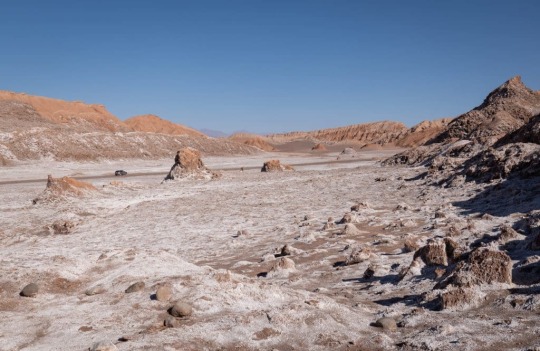

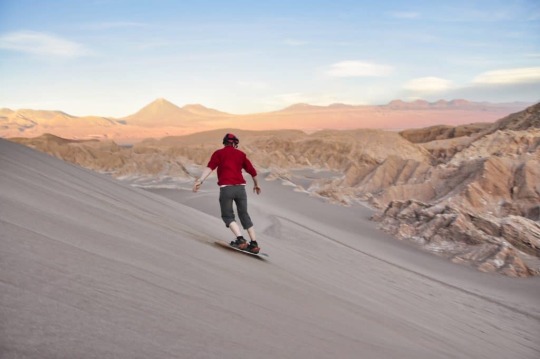





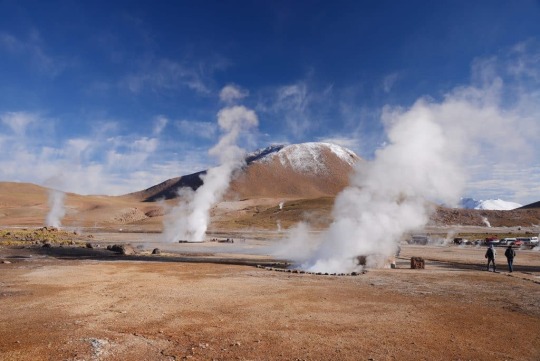
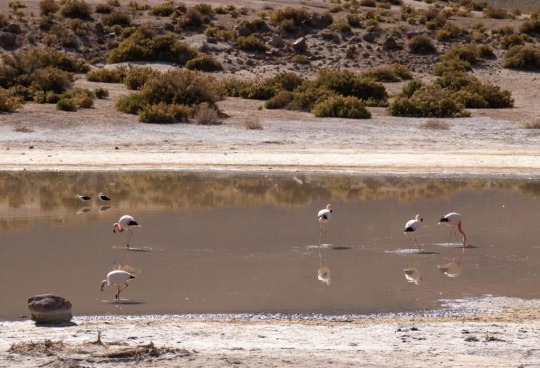
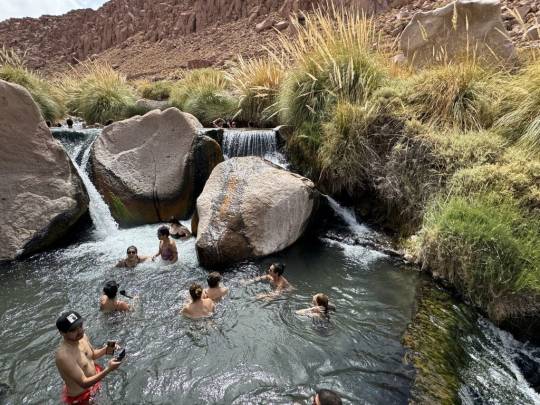
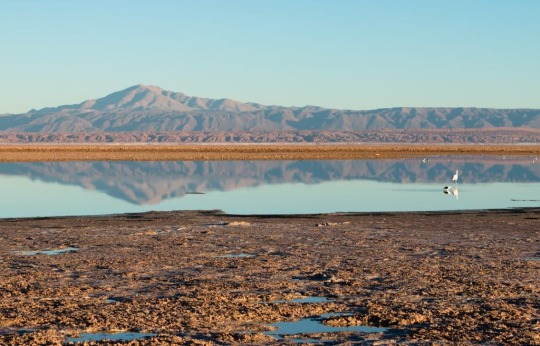
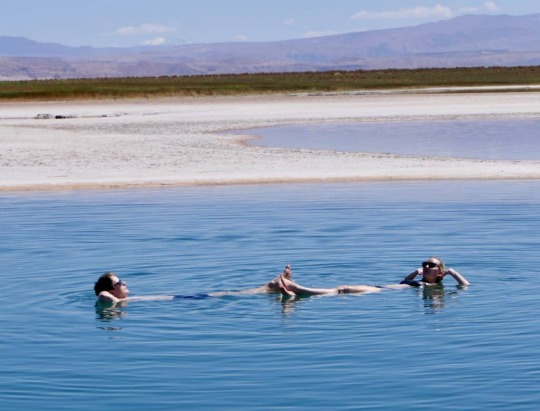
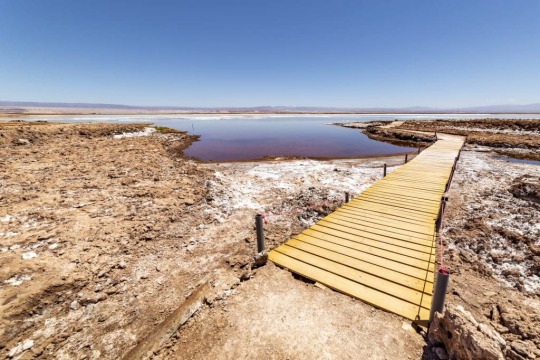
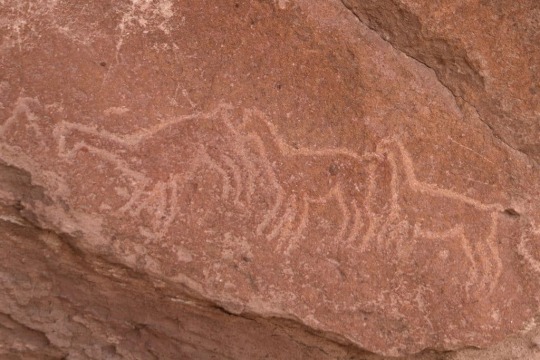

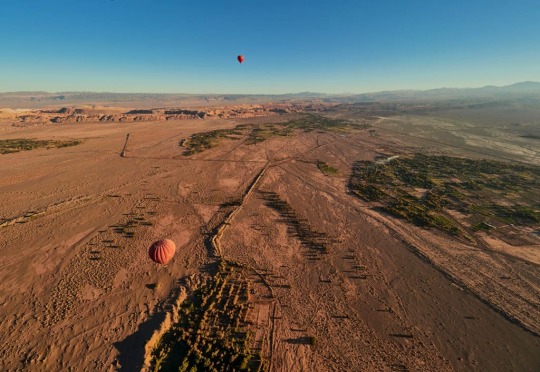
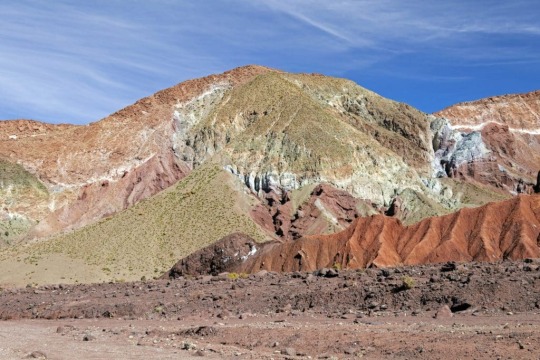
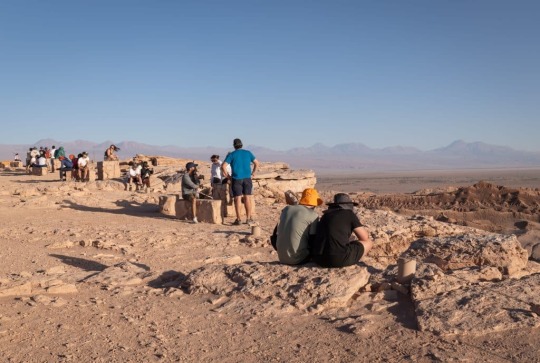
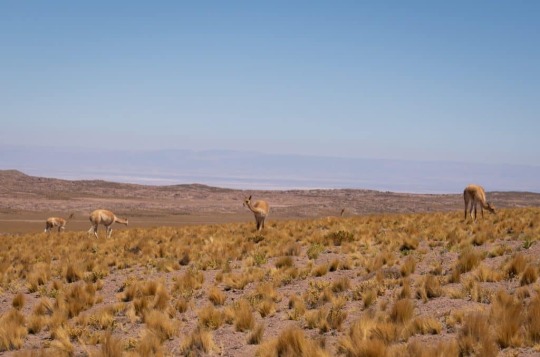
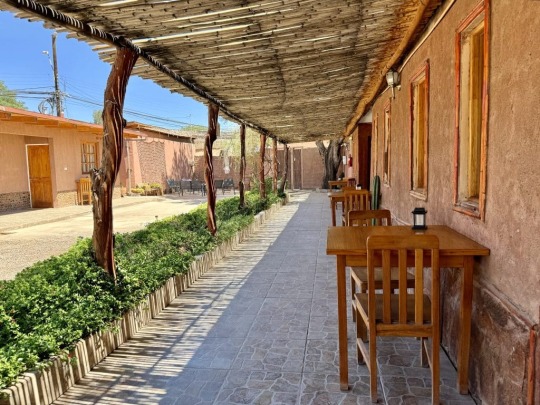

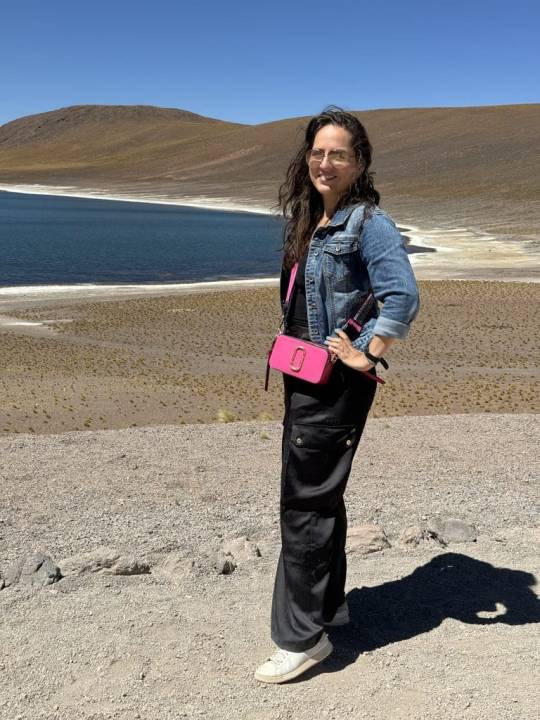
0 notes
Text
Jungle Expediation
Hello
I’m sending this message out as I will be out of contact for a couple of weeks. I’m trekking to El Mirador again, so I will be unable to reply to messages until 14th March. There’s no WiFi in the jungle (or phone signal, electricity, light pollution, etc!)
My posts should be published automatically and should appear on my Four Pillars Facebook page. They are unlikely to make it to other…

View On WordPress
0 notes
Text

Officials from the National Turkey Federation and the Poultry and Egg National Board Present a Thanksgiving Turkey to President John F. Kennedy. Photograph By Robert Knudsen, National Archives
Turkeys Can Swim—and Other Fun Facts For Thanksgiving Table Talk! There's Much More To America's Holiday Bird Than White and Dark Meat.
— Published: November 21, 2018 | Thursday November 23, 2023 | By Mark Strauss
Every year at Thanksgiving, families and friends gather to share personal stories and perhaps reflect on the early history of the United States. But aside from deciding whether to ask for seconds, not much is said about the guest of honor at the holiday table: the turkey. That’s a shame, since that big, tasty bird has left a significant mark on history, science, language, and culture. So maybe on this Thanksgiving, take a moment to appreciate the turkey’s story with these remarkable facts and anecdotes gathered from across the centuries.

A Cooked Turkey—in this case deep fried—is the centerpiece of the traditional Thanksgiving dinner in millions of U.S. homes. Photograph By Jim Lo Scalzo, EPA/Redux
Alpha Turkeys 🦃🦃🦃
After an exhaustive study of wild turkeys in southeastern Texas, researchers were startled to discover that the community of birds is “characterized by an astonishing degree of social stratification, greater than had previously been seen in any society of vertebrates short of man.”
“The Social Order of Turkeys,” published in the June 1971 issue of Scientific American, described an avian dystopia where the permanent status of each individual is determined in the first years of its life. Young males, for instance, engage in a grueling two-hour battle. The victor gains alpha male status and the right to bully the vanquished turkey for as long as it lives. During breeding season, the dominant males gather together and literally strut their stuff in unison before the females, like a scene out of West Side Story. But despite the synchronous display, only the most dominant of the alpha male turkeys—six out of 170—are allowed to mate.
Turkeys 🦃🦃🦃 Among the Maya
"For the Maya, turkeys were quintessential animals for feasting and for sacrificial offerings,” writes University of Wisconsin-Milwaukee art historian Andrea Stone. The reverence for the turkey among the ancient Maya is apparent in their stunning artistic depictions of the bird—with its characteristic drooping wattle—on vases and in codices. Historians had long thought that the Maya had domesticated the turkey sometime between A.D. 250 and 1000, but upon closer examination of turkey bones found in the ancient city of El Mirador, researchers at the University of Florida concluded that the Maya had domesticated the birds a thousand years earlier than previously estimated.
Text found in the Dresden Codex reveal that the Maya cooked turkey tamales. If you’d like to add a little spice to your traditional Thanksgiving meal, chef Julie Powell has re-created the recipe.

Male Turkeys Strut their Stuff to Win the Attention of Females. Turkeys adhere to a strict social pecking order established by intense sparring. Photograph By Patricio Robles Gil, Sierra Madre/National Geographic
Watch Your Language
Considering that it was once deemed indecent for a woman to expose her ankles, we shouldn’t be surprised that prurient diners adopted anatomical euphemisms while serving turkey and other poultry.
In the mid-1800s, the term “drumstick” entered popular use to avoid the scandal of expressing desire for a bird’s lower leg. Likewise, according to culinary historian Mark Morton, “Prudery was also the impetus behind the adoption of the terms ‘white meat’ and ‘dark meat,’ which arose in the 1870s as euphemisms for the breast and legs.”
All-Star Athletes
Look! Up in the sky! Wild turkeys can fly short distances at 40 to 50 miles an hour. (Domestic turkeys can’t, a factoid that was used to great comedic effect in the famous Thanksgiving episode of WKRP in Cincinnati.) Wild turkeys can also run 12 miles an hour and, completing the triathlon, they are actually adept swimmers. They move through the water by tucking their wings in close, spreading their tails, and kicking.
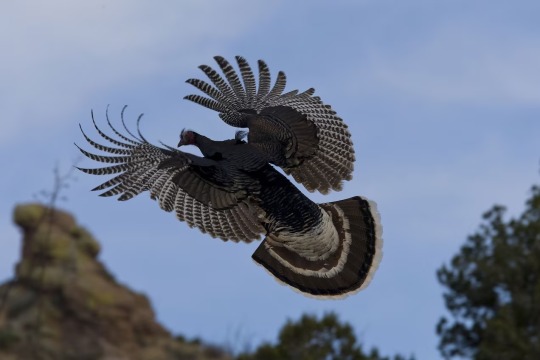
Wild Turkeys are able to fly short distances at considerable speed. They can also run and swim. Photograph By Roy Toft, National Geographic
Granted, wild turkeys don’t swim often. As John James Audubon wrote in 1831, “I have been told by a friend that a person residing in Philadelphia had a hearty laugh on hearing that I had described the Wild Turkey as swimming for some distance, when it had accidentally fallen into the water. But be assured, kind reader, almost every species of land-bird is capable of swimming on such occasions, and you may easily satisfy yourself as to the accuracy of my statement by throwing a Turkey, a Common Fowl, or any other bird into the water.” (Actually, please don’t do that.)
Ben Franklin and the National Bird
Although the esteemed Founding Father once declared the wild turkey to be more virtuous than the bald eagle, there’s scant evidence that he preferred it as the national symbol of his new country.
Franklin’s feathers got ruffled when, in 1783, he learned that the Society of the Cincinnati—a group of officers under the command of George Washington—wanted to establish a hereditary order of merit, to be passed down from oldest son to oldest son. Franklin, a fifth-generation youngest son, expressed disdain for the officers and their aristocratic trappings, including their choice of the eagle as the emblem for their badge.
In a letter to his daughter, Sarah Bache, he wrote, “For my own part I wish the bald eagle had not been chosen as the representative of our country. He is a bird of bad moral character. He does not get his living honestly … For in truth, the turkey is in comparison a much more respectable bird, and withal a true original native of America.”
But did Franklin truly regret the eagle as the national symbol? As author Elizabeth Gawthrop Riely writes in the journal Gastronomica, “The sober historian must be skeptical. After all, eight years earlier, in 1776, he himself had served on the committee with Jefferson and Adams when the turkey was not chosen, and at other instances Franklin used the eagle rather than the turkey as an emblem. No other evidence in the vast Franklin archive mentions his support of the turkey as national bird.”
More likely Franklin, knowing that his lengthy letter would probably be published in U.S. newspapers, singled out the eagle as part of a larger cautionary tale against creating aristocratic institutions.

The Turkey-in-Chief
The tradition of sending a Thanksgiving turkey to the White House began during the administration of President Ulysses S. Grant, who was gifted with a 34-pound bird by Rhode Island Senator H.B. Anthony on behalf of turkey growers in his state.
However, Cornell University anthropologist Magnus Fiskesjö writes that the formal custom of pardoning a Thanksgiving turkey began in Alabama, “where the ceremony was first invented in the 1940s as a governor’s ritual,” before it was “exported to the capital.”
John F. Kennedy is sometimes credited with the first presidential pardon of a turkey when he declared, "Let's keep him going." According to the White House Historical Association, “The formalities of pardoning a turkey gelled by 1989, when George H. W. Bush, with animal rights activists picketing nearby, quipped,"'Reprieve,' ‘keep him going,’ or ‘pardon’: It's all the same for the turkey, as long as he doesn't end up on the president's holiday table.”
Talking Turkey 🦃
Turkeys produce several different distinct sounds beyond their famous gobble (more of an ill-obble-obble-obble), which is uttered to attract females and establish territory. Other “words” in the turkey lexicon: a contact call that sounds like a yelp (keouk, keouk, keouk), an alarm (putt), and a cluck that’s used as an assembly note (kut).
A Wily Opponent
While domesticated turkeys are regarded as docile dullards, hunters across the centuries, including Theodore Roosevelt, have deemed the bird’s feral brethren to be cunning adversaries.
“The wild turkey is, in every way, the king of American game birds,” the future president wrote in 1893. “[It] really deserves a place beside the deer; to kill a wary old gobbler with the small-bore rifle, by fair still-hunting, is a triumph for the best sportsman.”

This Life-size Watercolor of a Wild Turkey appears in John James Audubon's famous Birds of America, printed between 1827 and 1838. Photograph By Field Museum Library/Getty Images
Born to be Wild
Concerns that wild turkeys might become extinct peaked in the early 20th century, when the U.S. government released dire statistics on their declining numbers nationwide. “These are diminishing so fast that 1920 will see the finish of the turkey tribe unless the authorities take a hand,” declared an editorial in the December 19, 1912, issue of the Aberdeen Herald.
Some sought to save the bird through a raise-and-release program. “The experiment is being made in California, and also in New York State, where the Game Breeders’ association (an influential and wealthy organization of public spirited men), is already raising wild turkeys on a considerable scale on its breeding farms, some hundreds of the birds having been trapped in Virginia and the Carolinas for this purpose,” reported the El Paso Herald on November 25, 1911.
But the game-farm idea was a failure. "Turkeys that were raised in those situations did not have the opportunity for the hen to teach what predators would eat them,” explained James Earl Kennamer of the National Wild Turkey Federation in Edgefield, South Carolina. “It was like taking a kid out of New York City and putting him in the woods and saying, 'Go hunt.' They didn't know what to do."
The turning point came in 1951 when wildlife biologists in South Carolina devised a method of capturing wild turkeys with a net shot from a cannon—enabling the biologists to release them into habitats where wild turkeys were scarce or nonexistent. By 1973 the wild turkey population had rebounded to 1.5 million, and today it numbers nearly seven million.
Beautiful Turkeys 🦃🦃🦃

Narragansett Turkey lets it all hang out at the Knoxville Zoo. Photograph By Joel Sartore, National Geographic Photo Ark

This Brightly Colored Ocellated Turkey (Meleagris Ocellata) at Texas’ Dallas World Aquarium might remind some readers of a Peacock. Photograph By Joel Sartore, National Geographic Photo Ark

An Australian Brush Turkey (Alectura Lathami) keeps it real at Sylvan Heights Bird Park in Scotland Neck, North Carolina. Photograph By Joel Sartore, National Geographic Photo Ark
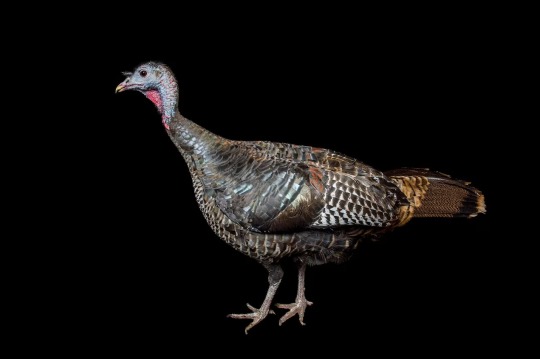
A Female Rio Grande Wild Turkey (Meleagris Gallopavo Intermedia) chills out at the Cheyenne Mountain Zoo in Colorado Springs, Colorado. Photograph By Joel Sartore, National Geographic Photo Ark
0 notes
Text
BOOK BLAST: "Caged Time" by Erik S. Meyers
BOOK BLAST
Book Title: Caged
Time
Author: Erik S.
Meyers
Publisher: Mirador
Publishing
Release Date: February 2,
2021
Genres: LGBTQ Jewish historical fiction
Tropes: Struggling to be yourself in a place/time that doesn’t really want
you
Themes: Coming out, being yourself
Heat Rating: 4 flames
Length: 144
pages
It is a standalone book and
does not end on a cliffhanger.
Goodreads
Buy Links
Amazon…

View On WordPress
0 notes
Text
5 trends that will redefine home design in the US.
Post has been published on becoration
5 trends that will redefine home design in the US.

Interior design is constantly evolving. New trends are published every now and then, considering all kinds of homes and spaces. Among the latest innovations, sustainable materials and smart technology, minimalism, and the integration of natural elements are included. Create natural spaces. The latest trend in organic style is to transform the bathroom into a wellness oasis by merging natural and sustainable elements that provide a unique experience of relaxation and harmony. An example of this is the space presented by Strohm Teka called Organic Flows, which is a simple and aesthetically pleasing bathroom that promotes calmness, inspiration, and physical and emotional well-being through its careful integration of natural pieces. The collection highlighted in this space is Lavi, awarded with an Honorable Mention at the 2022 European Product Design Awards. This collection is divided into four areas: sinks, bathtub, shower, and toilet/bidet, and is characterized by its careful design that seeks to integrate natural elements in each piece to create a relaxing and wellness environment in the bathroom. The bathroom is a space that connects us with the nature and harmony of the home. In this case, the specially designed oak wood furniture blends with solid mineral sinks and white faucets with wooden details. The bathtub, with its smooth texture and matte finish, made of solid mineral, provides an aesthetic quality and a unique touch. The suspended Strohm Teka toilet and bidet area, as well as the shower area, are hidden by handcrafted plaster sculptural pieces. These totems blend perfectly with the bathroom decor and add a touch of elegance and sophistication. Mix the classic with the futuristic. Paris never goes out of style. Parisian style in interior decoration is characterized by its elegance, sophistication, and a balance between the classic and the modern. On the contrary, the futuristic character breaks with the classic with innovative and avant-garde elements, with a minimalist aesthetic and clean lines that reflect a vision of the future in the present. Did you think they couldn’t go hand in hand? The trend of combining two opposite styles of interior design, such as the classic and the modern, adds a unique and exciting dimension to the space, creating a balanced harmony between the traditional and the contemporary. Say yes to circular windows, unique floors, and open bathtubs! Jacob Delafon presents “Paris 2048”, a bathroom space designed by Guillermo García-Hoz at Casa Decor. With a mix of past, present, and future, the design integrates the bathtub, toilet cabin, sink, and shower in four different scenarios that coexist in harmony. Curved islands? Now it’s a definite yes. Kitchens with islands have become a popular trend in interior design, providing extra functionality and an elegant and modern look that transforms the space into a perfect place for cooking and socializing. With curved islands, where design and functionality integrate to create a unique and elegant space. A true work of art that is not only practical but also a source of inspiration and harmony to fully enjoy your home. There are many types of islands in the market, but one that has become popular in recent times is the curved island. An example of this can be seen in the BC3 Cocinas and Ele Room 62 project, which follows the latest trends in design, such as the combination of a walnut door with lacquered furniture. The elegant and sophisticated “Mi cocina con mirador” is inspired by the French style, with reinterpreted marquetry floors and moldings on walls and floors. The space stands out for its perfect balance between design and functionality, with an area for the new Bc3 Cocinas handle doors and an illuminated bay window to enjoy the kitchen. Two environments, one space. How can you liven up your gatherings when you have visitors and make every night a party at home? The answer is very simple: by combining your living room with a karaoke. Complement your lifestyle with a fun and exciting activity that will allow you to share unforgettable moments with friends and family while enjoying music and fun in the comfort of your home. It’s not something we’ve seen before – at least not in Europe. Thanks to the winning firm of the Best Casa Decor 2021 Project, GIRA, we have been able to see an example of this combination in their Smart Home with the new Push Sensor 4 switch and the Gira G1 screen. The “Hirameki” project is inspired by Japanese culture and achieves a zen atmosphere with noble materials, organic shapes, and a balanced combination of colors. The collaboration with ARTE International, ORAC DECOR, and PERALTA VIDAVI contributes to the elegance of the space. Textured wall coverings. Wall coverings and murals are key elements in interior design, as they add textures, patterns, and colors that can completely transform a space, adding a touch of personality and style that reflects the creative vision of the designer. What we have seen lately is the creation of a new dimension in interior design with the latest generation of wall coverings. Wood, natural fibers, and suede textures, along with the golden color, will allow you to create unique and sophisticated environments that connect you with nature and elegance, turning your home into a true oasis of style and distinction. Suede texture reliefs. Can you imagine having suede-covered walls? It’s the new boom in wall coverings. Not only does it provide a classic style, but it also gives your home an inimitable personality. As we have seen, the Consentino Group knows what it’s talking about. In their ensuite bathroom project “Le Bain Parisien,” they use Arte wall coverings to add style and personality to the space. Interior designer Alejandra Pombo integrates the bathroom with other spaces, using various materials, and the selected Arte covering is the Palma model from the Yala collection, in brown tones with a suede texture.
Source: Portico.es in Spanish
0 notes
Text
There is sand and sand
Sand dune of Bolonia as seen from Mirador de la Duna de Bolonia
Sunset Loco Beach, Playa Bolonia
Running down the dune
Tarifa beach, empty shields
Sun bathing on Bolonia dune
Next planned episodes / already published ones
1.Western of Hercules’ pillars (4.6.2023, published)
2.Africa on sight! (7.6.2023, published)
3.Where fields and seas are mown by same winds (9.6.2023, published)
4.I see…

View On WordPress
#a long week end in Andalusia#artborghi photography zurich#explore Costa de la Luz#lorenzo borghi photographer zurich#on the road between Malaga and Sevilla
0 notes
Text
Un viaje de sorpresas en las sierras de Córdoba
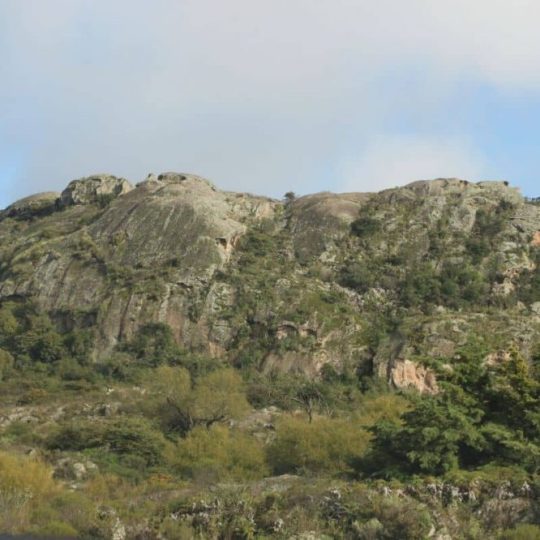
Una decepción enológica: el vino cordobés que resultó ser de origen mendocino
No mencioné anteriormente que una de las consignas del viaje era probar vinos de la provincia en la que nos encontrábamos. En Córdoba, seleccionamos un vino cordobés, pero al leer mejor la etiqueta, nos dimos cuenta de que el vino había sido fraccionado en Córdoba y era de origen mendocino. Fue una gran decepción, pero a partir de ese momento fuimos más cuidadosos. Cabe mencionar que el vino tenía un nombre muy particular, muy propio de Córdoba.
Llegó la mañana y, después de una buena noche de descanso, desayunamos abundantemente, ya que en estos viajes uno no sabe cuándo volverá a comer. Cargamos nuestras maletas para continuar el viaje, esta vez hacia Salsacate, pasando por los Gigantes y luego por Chamical, para finalmente llegar esa noche a Villa Unión.
Explorando los imponentes paisajes de los Gigantes
Partimos desde Tanti en una mañana fantástica, fresca y soleada, y tomamos la ruta hacia Salsacate, que era de tierra. Una vez que cruzamos la cuesta, ascendimos hacia la llanura formada por esas sierras. Era un paisaje maravilloso, principalmente campos ganaderos con formaciones parecidas a los mallines de la Patagonia, con vegetación escasa pero mucho pasto, corrales y puestos sin mucha maquinaria agrícola. Así fue transcurriendo la primera parte del recorrido hasta que llegamos a la formación de los Gigantes. Eran auténticas moles de piedra en alturas imponentes, paredes rectas que terminaban en valles y llanuras donde se desarrollaba la actividad agropecuaria. Las montañas escarpadas adoptaban innumerables formas, algunas con picos blanqueados por la helada, ya que superaban los 3.000 metros de altura. La ruta nos llevaba a unos 2.000 metros sobre el nivel del mar.
También vimos algunos hoteles o, más bien, posadas, ya que en fines de semana y en verano debe haber mucho turismo local. Hablando de turismo, lo que sí se podía apreciar eran numerosos turistas extranjeros, ya que desde algunos miradores se pueden avistar cóndores, aguiluchos y otras aves de gran tamaño, así como ciervos, liebres, zorros y otras especies en las praderas.
Continuamos disfrutando del paisaje, sabiendo que es muy probable que no volvamos a esta región en el resto de nuestras vidas, a menos que ocurra alguna casualidad o recibamos una invitación. Podríamos decir que esto fue un “touch and go” (tocar y seguir) jajaja.
Originally published at on https://marcelohidalgosola.com.ar/ May 15, 2023.
0 notes
Text
Event Link 2023 NAMM Show Schedule
Event Link 2023 NAMM Show Schedule
https://www.namm.org/thenammshow/2023/session/jon-hammond-funk-unit
Jon Hammond Funk Unit


9:45 am - 10:40 am
ACC, Plaza, ADJ Arena Plaza Stage
In-Person Only
Journalist Ricky Richardson Los Angeles News Observer: “Organist Jon Hammond served up a set of original compositions, funky, swinging jazz and blues to the delight of the crowd gathered at the ADJ Arena Plaza Stage."
Funky Swinging Jazz and Blues instrumentals original compositions by organist Jon Hammond featuring international soloists. As seen on cable TV for 38 years Jon Hammond Show, long-running music, travel and soft news program. Jon Hammond and band members have been performing at NAMM Shows and Frankfurt musikmesse for 33 years, as well as Music China, Japan Musical Instruments Fair and toured Germany with 21 piece Landesjugendjazzorchester German Youth Jazz Orchestra. ASCAP Composer Publisher and Member American Federation of Musicians Local 6 and Local 802, 2014 NAMM Believe in Music award recipient.
NAMM Show Sessions April 13th - on behalf of Jon Hammond Funk Unit folks, saddened to hear of Wayne Shorter's passing - we are looking forward to kicking things off again when the doors open at Anaheim Convention Center play some funk for ya'!
Happy to have back on the band my longtime friend tenor saxophonist Marc Baum, first time welcoming Nic Kubes drums
with longtime bandmates Joe Berger guitar, Leslie J. Carter Chuggy Carter congas & percussion, can't wait!
Arena Plaza Stage, thanks ADJ Lighting and Greg Herreman Productions - mixer Tony Mirador - Mark Magill 'Stage Dad' & Ken Freeman stage Odie de la Fuente Akroz stage team - we'll see you there bright and early! - Jon Hammond
Jon Hammond Funk Unit
9:45 am - 10:40 am
ACC, Plaza, ADJ Arena Plaza Stage




NAMM Show, Event, Concert, Funk, Arena Plaza, ADJ Lighting, Hammond Organ, tenor saxophone, drums, electric guitar, international music community, Anaheim
NAMM Show, Event, Concert, Funk, Arena Plaza, ADJ Lighting, Hammond Organ, tenor saxophone, drums, electric guitar, international music community, Anaheim
#NAMM Show#Event#Concert#Funk#Arena Plaza#ADJ Lighting#hammond organ#tenor saxophone#drums#electric guitar#international music community#Anaheim
1 note
·
View note